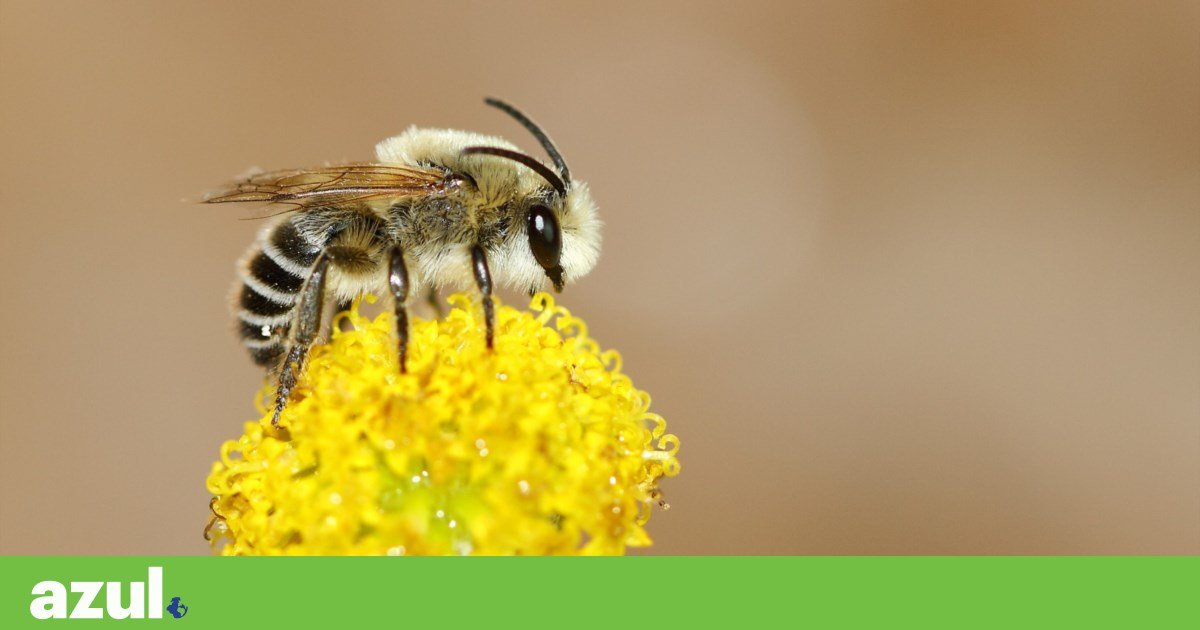When we think about pollination, we cannot list the many animal species associated with this natural process. In the National Region alone, however, 222 species distribute pollen, the book says, The Pollinator Guide Portugal. The work is launched this Saturday, at 11 a.m., in the Faculty of Science and Technology of the University of Coimbra. The event is open to the public and will take place in the tropical greenhouse of the entity’s botanical garden.
The Portugal Pollinator GuideContributed by more than 25 experts in botany and entomology (a specialty of biology that studies insects), it contains detailed scientific information on 222 pollinator species in the country.
The book was prepared by Polinização, a project coordinated by the Center for Functional Ecology – Science for People and the Planet (CFE) of the University of Coimbra and financed by the Environmental Fund of the Ministry of Environment and Energy. The initiative aims to develop an action plan for the conservation and Durability of pollinators.
Know how to save
“In terms of raising awareness among the general public, we think that people only value the conservation of what they recognize in terms of importance”, argues Joao Laureiro, CFE researcher and co-coordinator of the edition of PolinizACÇÃO and the book, in conversation with Azul.
“About 75% of the food we consume depends on this process, and without these transport agents, we lose a large part of our agricultural production,n.” said the researcher. “To give just one example, apple trees, cherry trees, among other foods fundamental to our well-being, will have pollination deficits.”
The scientist also recalls that pollinators and flower populations are declining in Europe. International Union for Conservation of Nature announcement. Recently, 10% of the continent’s wild bees and 15% of butterflies are threatened with extinction. And female white butterflies (Wollaston Pier), endemic to the island of Madeira, were declared extinct.
Birds and even geckos
What about the diversity of pollinator species in Portugal? While we can consider obvious examples, such as the aforementioned bees and butterflies, there are also less obvious cases. “Beetles are pollinators of plants that have structures that we practically call ‘landings’, such as marigolds.”, gives the example of João Loureiro.
They are not the most effective pollinators – like bees, flies, or butterflies – but they play a very important role. Some species of ants are also pollinators”, observes João Loreiro.
The researcher highlights an individual case, worthy of an entire chapter in the book: the Madeira gecko. “This type of relationship exists almost exclusively on the islands, because when this gecko arrived on the island of Madeira, there were very few food resources – it is a very important pollinator of the island’s ecosystem”, says João Laureiro.
The value of citizen science
In addition to the investigative work Polinização has done, the project also highlights the importance of citizen science in pollinator conservation. “And A way to make people aware of its importance, BiodiversityEspecially in the case of pollinators”, explained researcher Azul. “The guide itself has a section where we present some public engagement activities.”
João Loureiro highlighted two citizen science initiatives by the project, namely the one-page Platform Biodiversity4all users can share photos of insects in the pollination process, and the mobile application, it counts, to record the number of insect pollinator interactions on specific groups of flowers.
